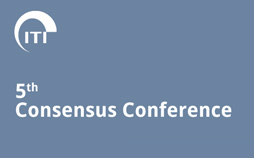
Survival and Complication Rates of Implant-Supported Fixed Prostheses over the Last Decades
Consensus Statements
The systematic review by Pjetursson and Sailer was conducted to compare the survival and complication rates of implant-supported prostheses published up to the year 2000 with those reported in studies published after the year 2000.
An association between period of publication and fixed implant-supported prosthesis outcomes were found with higher survival rates and overall lower rates of mechanical and technical complications reported in more recent clinical studies.
However, the incidence of reported technical complications is still high. The difference in survival rates was most evident for screw-retained prostheses, where the reported survival rate of 77.6% in the older publications was increased to 96.8% in the more recent ones.
Treatment Guidelines
Risk of Fracture - Implants
Implant fracture is a rare complication. To avoid implant fracture it is recommended that clinicians consider the use of appropriately designed and manufactured implants with properly investigated and documented low fracture rates. Similarly, the clinician should use implants manufactured from materials that have been thoroughly investigated.
The risk of implant fracture can be considered extremely low when:
- The appropriate distribution, number, and diameter of implants are used.
- Implants are placed using a restoratively driven protocol.
- Implants are combined with an adequately fitting prosthesis.
Risk of Fracture and/or Loosening - Prosthetic Screws
Fracture of manufacturer screws made to specified tolerances can be influenced by three factors: mishandling, misfit, and occlusal forces.
- Mishandling: To reduce the risk of fracture of prosthetic screws, it is recommended that a clinician follow the manufacturer’s instructions for use.
- Misfit: An inadequately fitting framework may be a predisposing factor to prosthetic screw fracture or loosening. It is recommended to prioritize evaluation of the accuracy of the interface between the machined head of the screw and its seating surface over the entire area of contact to reduce the risk of loosening and fracture.
- Occlusal forces, usually in the presence of other predisposing factors, misfit, and mishandling, may lead to prosthetic screw fracture or loosening.
Risk of Fracture and/or Loosening - Abutments
It is recommended that the clinician carefully evaluate the differential etiology of screw loosening, as the literature does not differentiate between abutment or prosthetic screw loosening sufficiently to conclude which type of screw is more likely to loosen.
Metal abutment fracture is a rare complication. Greater caution is advised with ceramic abutments. It is recommended that the specific material-based requirements of ceramics should be respected when choosing, designing, and handling these abutments.
Risk of Fracture of Framework and/or Veneering Materials
Currently framework fracture is a rare complication. The choice of material, appropriate design, and method of fabrication are all factors in reducing the risk of framework fracture.
To reduce the risk of fracturing the veneering materials, the framework must provide adequate support for the veneering ceramic or resin in order to avoid excessive thickness of the veneering material.
When choosing the material and determining framework design, it is recommended that the final contour of the definitive prosthesis be visualized prior to framework fabrication.
Scheduled regular maintenance appointments should include a careful occlusal review. It is recommended that clinicians undertake any required adjustments to the prosthesis, inclusive of meticulous polishing of worn ceramic surfaces, to reduce the risk of fracturing of the veneer material.
Quality Assurance
It is recommended that clinicians, technicians, and manufacturers employ a tracking system for implants and restorative components. Clinicians should be aware that not all implant systems have the same level of documentation. The clinician should be aware of the origin of the components used.
Downloads and References
Related items
Share this page
Download the QR code with a link to this page and use it in your presentations or share it on social media.
Download QR code
